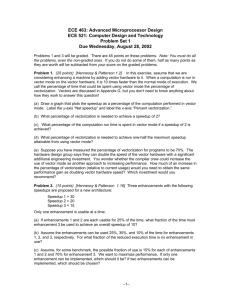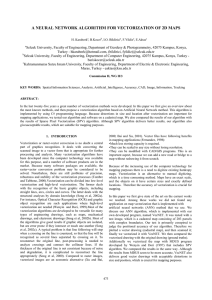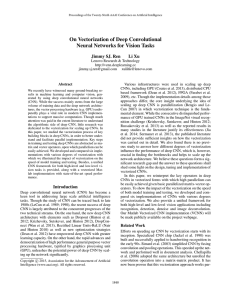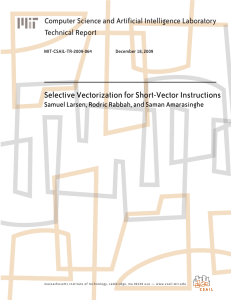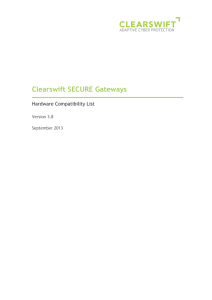HW 1
advertisement
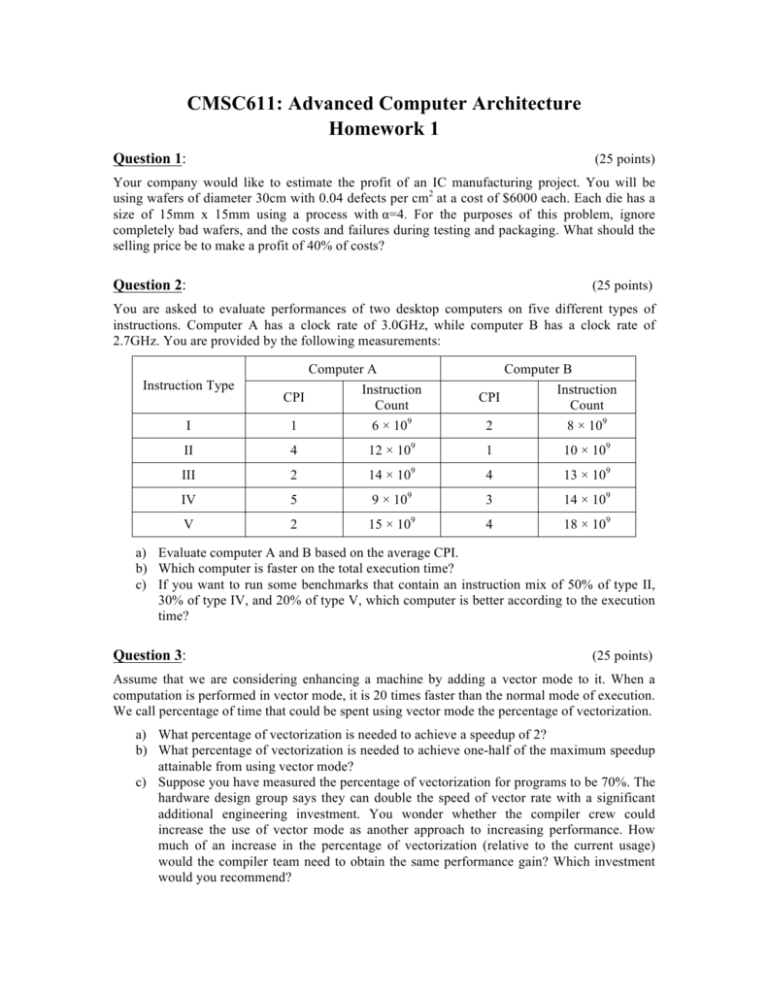
CMSC611: Advanced Computer Architecture Homework 1 Question 1: (25 points) Your company would like to estimate the profit of an IC manufacturing project. You will be using wafers of diameter 30cm with 0.04 defects per cm2 at a cost of $6000 each. Each die has a size of 15mm x 15mm using a process with α=4. For the purposes of this problem, ignore completely bad wafers, and the costs and failures during testing and packaging. What should the selling price be to make a profit of 40% of costs? Question 2: (25 points) You are asked to evaluate performances of two desktop computers on five different types of instructions. Computer A has a clock rate of 3.0GHz, while computer B has a clock rate of 2.7GHz. You are provided by the following measurements: Computer A Instruction Type Computer B CPI Instruction Count CPI Instruction Count I 1 6 × 109 2 8 × 109 II 4 12 × 109 1 10 × 109 III 2 14 × 109 4 13 × 109 IV 5 9 × 109 3 14 × 109 V 2 15 × 109 4 18 × 109 a) Evaluate computer A and B based on the average CPI. b) Which computer is faster on the total execution time? c) If you want to run some benchmarks that contain an instruction mix of 50% of type II, 30% of type IV, and 20% of type V, which computer is better according to the execution time? Question 3: (25 points) Assume that we are considering enhancing a machine by adding a vector mode to it. When a computation is performed in vector mode, it is 20 times faster than the normal mode of execution. We call percentage of time that could be spent using vector mode the percentage of vectorization. a) What percentage of vectorization is needed to achieve a speedup of 2? b) What percentage of vectorization is needed to achieve one-half of the maximum speedup attainable from using vector mode? c) Suppose you have measured the percentage of vectorization for programs to be 70%. The hardware design group says they can double the speed of vector rate with a significant additional engineering investment. You wonder whether the compiler crew could increase the use of vector mode as another approach to increasing performance. How much of an increase in the percentage of vectorization (relative to the current usage) would the compiler team need to obtain the same performance gain? Which investment would you recommend? Question 4: (25 points) Your colleague is trying to choose servers between purchasing DELL PowerEdge M600 and HP ProLiant BL480c to do some work with processor-centric computations on integers. You really want to help your colleague, so you suggest him/her to check SPEC CPU2006 benchmark results (available at http://www.spec.org/cpu2006/results/cpu2006.html, CINT2006). Here are some benchmark results your colleague interested in: Benchmark DELL PowerEdge M600 (Intel Xeon E5450, 3.00 GHz) HP ProLiant BL480c (Intel Xeon X5460, 3.16GHz) Seconds Ratio Seconds Ratio 400.perlbench 498 19.6 475 20.6 401.bzip2 593 16.3 564 17.1 403.gcc 528 15.3 612 13.1 464.h264ref 711 31.1 687 32.2 a) Compare two servers based on the total execution time of the listed benchmarks. b) If your colleague’s works focus on compiling C programs, which server is better and why? c) If your colleague’s works focus on primarily video compression, which server is better and why? d) Say your colleague is writing and testing a video compression application. His application uses bzip to decompress half a dozen raw video sources, and then compresses each of them with the h264 video compression algorithm. You observe that as he is developing, he makes a change to his code, compiles it (usually just one file needs recompiling), then runs the application to test it. He does about 20 of these edit/test iterations to debug a change before checking it into his source control system. He is using the Mercurial source control system, which is implemented in Python, but you figure the Perl benchmark is a pretty good estimate of the performance for other scripting languages like Python as well. Given that expected workload, what is the estimated relative performance of the servers, and which would you recommend?
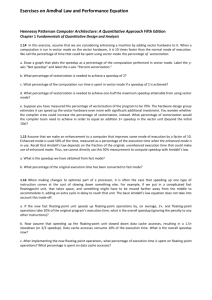



![1.14 [20/10/10/10/15] In this exercise, assume that we are](http://s3.studylib.net/store/data/008107156_1-4c2ce11e19e69484e2906286b2787a3a-300x300.png)
